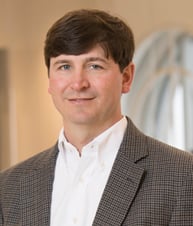
The following is a summary of the precedential patent-related opinions issued by the Court of Appeals for the Federal Circuit for the week ending February 22, 2013. Rishi Suthar and Wes Achey prepared the summaries in this issue.
Case Summaries
Infringement: Literal Infringement
Infringement: Doctrine of Equivalents: All Limitations Rule
Infringement: Doctrine of Equivalents: Function-Way-Result
Litigation Practice and Procedure: Procedure: Summary Judgment: Sufficiency of Evidence
Litigation Practice and Procedure: Procedure: Summary Judgment: Expert Testimony
Brilliant Instruments, Inc. v. GuideTech, LLC, No. 12-1018 (Fed. Cir. (N.D. Cal.) Feb. 20, 2013). Opinion by Moore, joined by Reyna. Opinion concurring-in-part and dissenting-in-part by Dyk.
In reversing the district court’s grant of summary judgment on noninfringement, the Federal Circuit ruled that the evidence viewed in favor of the non-moving party raised a genuine issue of material fact regarding literal infringement. The Federal Circuit further held that summary judgment of noninfringement under the doctrine of equivalents was improper where a genuine issue of material fact existed as to whether the accused products infringed the claims under the function-way-result test.
Brilliant Instruments, Inc. (“Brilliant”) filed a declaratory judgment action against GuideTech, LLC (“GuideTech”) seeking a determination that Brilliant’s products do not infringe U.S. Patent Nos. 6,226,231; 6,091,671; and 6,181,649 (“the ’231 patent,” “the ’671 patent,” and “the ’649 patent,” respectively), all of which relate to circuits measuring timing delays in microprocessors. The district court granted Brilliant’s motion for summary judgment of no literal infringement of the ’231 patent and no infringement, either literally or under the doctrine of equivalents, of the ’671 and ’649 patents. GuideTech appealed, arguing that genuine issues of material fact precluded the district court from granting summary judgment.
The Federal Circuit, in examining the evidence in GuideTech’s favor, held that the testimony of GuideTech’s expert in connection with Brilliant’s products’ schematics raised a genuine issue of material fact as to whether Brilliant’s devices literally infringe the ’231 patent claim limitation requiring the presence of multiple measurement circuits in the same channel. As a result, the district court’s grant of summary judgment of no literal infringement of the ’231 patent was held to be improper.
Regarding the grant of summary judgment of no literal infringement of the ’671 and ’649 patents, the Federal Circuit agreed with Brilliant (and the district court) that its products could not literally meet the claim limitations requiring that the recited capacitor be part of a first current circuit. As the facts were undisputed in this regard, the Federal Circuit affirmed the district court’s grant of summary judgment of no literal infringement.
Under the doctrine of equivalents, however, the Federal Circuit held that summary judgment of noninfringement was improper. The court noted that Brilliant did not contest GuideTech’s expert’s opinions, which contained a detailed analysis under the function-way-result test. Rather, Brilliant’s only argument on appeal was that GuideTech’s theory vitiates the requirement that the “first current circuit” and “capacitor” are separate claim elements. The Federal Circuit explained that vitiation occurs where “the evidence is such that no reasonable jury could determine two elements to be equivalent.” In situations where the accused equivalent structure is the antithesis or polar opposite of the claimed structure, vitiation is more likely to occur. Applying the controlling law to the facts viewed in GuideTech’s favor, the court was not persuaded by Brilliant’s arguments that the claim elements would be vitiated under GuideTech’s theory. Because GuideTech created a genuine issue of material fact of whether changing the location of the capacitor in the accused device was an insubstantial difference, the Federal Circuit ruled that the district court erred in granting summary judgment of noninfringement.
In an opinion concurring-in-part and dissenting-in-part, Judge Dyk agreed with the majority on the propriety of summary judgment regarding literal infringement of the three patents-in-suit. Regarding noninfringement of the ’671 and ’649 patents under the doctrine of equivalents, however, Judge Dyk disagreed with the majority, explaining that in order to succeed on this theory, the patentee must set forth the analysis on a limitation-by-limitation basis. Since GuideTech’s expert instead applied the equivalents analysis to the invention as a whole, Judge Dyk stated that summary judgment of noninfringement of the ’671 and ’649 patents would be proper.
http://www.cafc.uscourts.gov/images/stories/opinions-orders/12-1018.pdf
________________________________________
Additional Notices
Alston & Bird's Federal Circuit Patent Case Summaries are intended to be informational and do not constitute legal advice or opinions regarding any specific situation. The material may also be considered advertising under certain rules of professional conduct or other law. This publication may be reprinted without the express permission of Alston & Bird as long as it is reprinted in its entirety including the copyright notice, ©2013.
